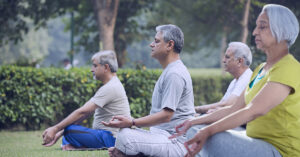Elderly patients often suffer from both acute and chronic conditions that can be extremely painful. While Arthritis is the most common, there are other bone and joint related problems that can be a cause of serious pain for the elderly. Along with this, the resulting pain from cancer, skin ulcers, diabetes mellitus, and surgical procedures also plagues elderly. Pain management is therefore not just important, but also its information is essential for the elderly. In this two part series we share a few of the techniques we discovered that are helpful to the elderly in managing pain.
The first part deals with doctors and experts, and how their advice can help you overcome the difficulties of living with the pain. The second part will cover personal habits such as diet and exercise for controlling the pain.
So here we go:
Listen to the Experts
For every problem you face, there will be hundreds of people claiming to have a cure, however since, chronic pain is among the most difficult problems to treat, as the solutions aren’t always clear, and in many cases there isn’t one guaranteed fix. A lot of trial and error is required to get to the root of the symptom and beat it. You must, and its importance cannot be emphasized enough, visit only the experts and avoid the other, making claims without backing them up with facts.
In every consultation, pay attention to whether the doctor is really listening to you, and whether he or she is proactive about ordering tests to find the cause of the problem — and suggesting physical therapy, medication, or other forms of treatment tailored for you. If the treatment doesn’t solve your problem, don’t hesitate to go back, and pay even closer attention to how the doctor reacts to your “What next?” questions. It shouldn’t be a problem to come in for repeated visits while you and your doctor try to get to the root of your pain and find a solution. If you start getting the feeling that the doctor is shrugging off your concerns, feels you’ve run out of options, or is sending the message that it’s “All in your head,” it’s time to find another doctor. Senior Citizens Residences policies have been defined by senior citizens homes for better medication.
Physiotherapy
For knee, hip, back, and other types of joint pain, physiotherapy can be one of the most effective treatments. To be truly effective, your physical therapy regimen needs to be individually tailored to your specific injury and other needs. All too often, those with chronic pain are referred to “one-size-fits-all” physical therapy programs, which can be unhelpful at best, and discouraging at worst.
Ask to be referred to a physical therapist for one-on-one therapy, at least for one or two sessions. That way you’ll have the individualized attention necessary to develop the exercises suited to your needs and to make sure you’re doing them correctly.
Pay Attention to your medication
Even if you’ve gotten relief from a particular medication in the past, pay close attention to any side effects and to whether the drug loses effectiveness over time. Even better, make an appointment with your doctor specifically to discuss medications, and prepare by making a list of everything you’re taking, when you tend to take it, and how often. (Or, simply take all your medications — both prescription and over-the-counter — with you.) Be honest; the doctor can’t help you if he or she doesn’t have a clear picture of what’s happening.
With these precautions and steps, you should be able to get your pain in control, however do remember, getting relief from chronic pain is a continuous exercise and at many times it is essential that you also pay attention to your habits and diet. Next week we shall be bringing you tips and tricks that can do daily to help with your pain.





